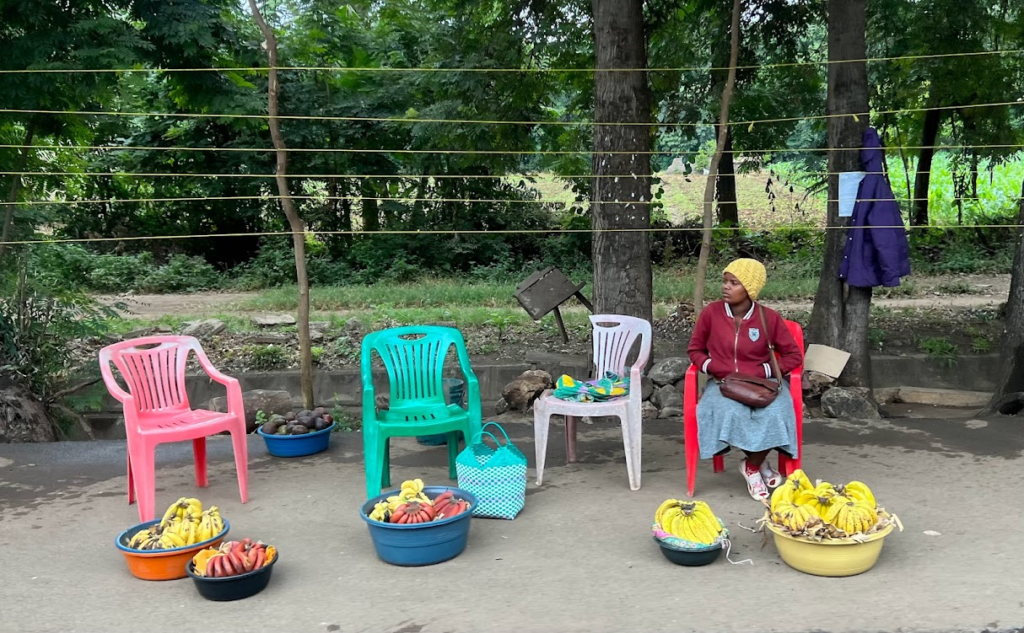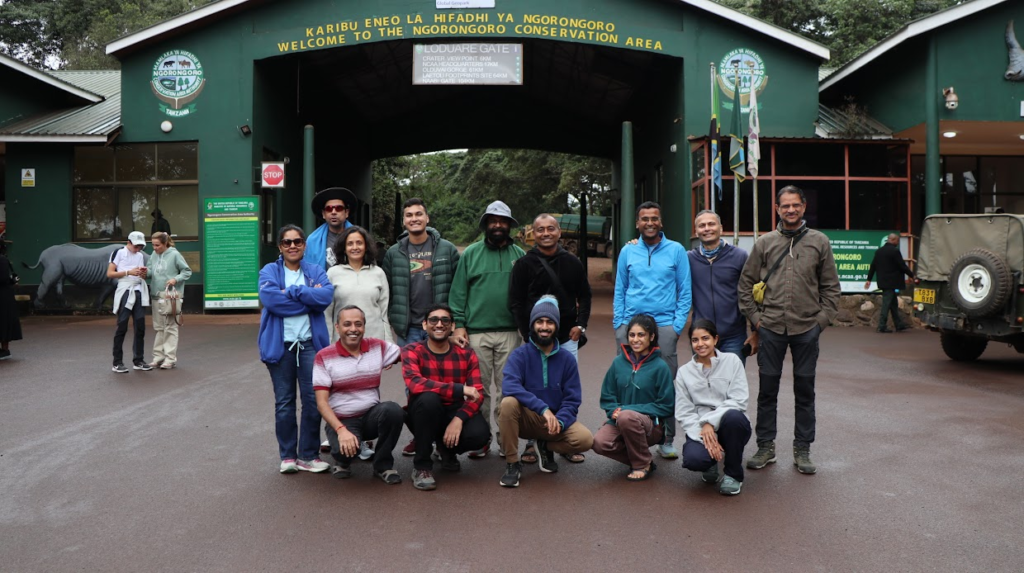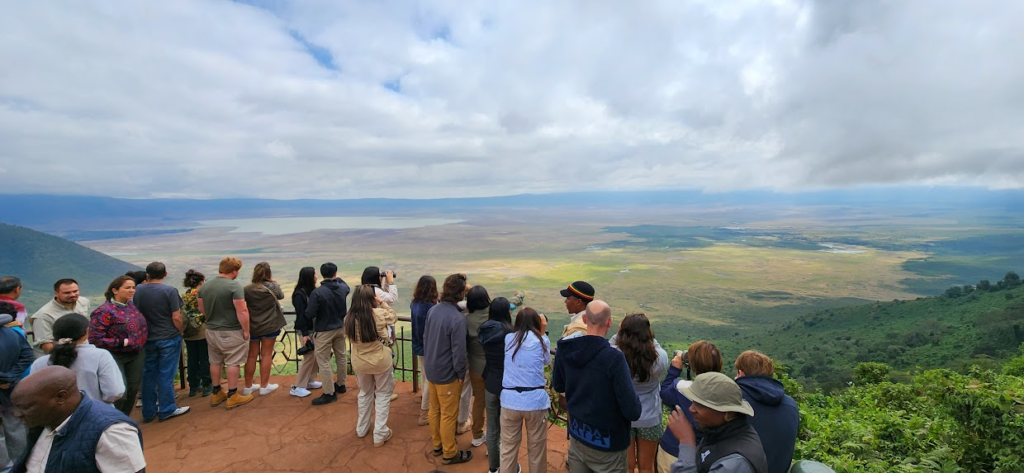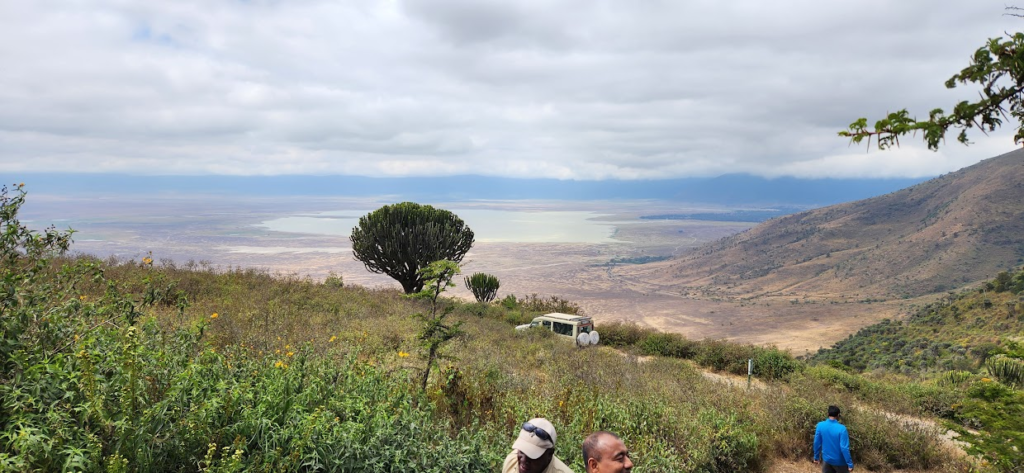The Ngorongoro Crater is located in the northern part of Tanzania, near the Kenya border. As a part of our itinerary for Kilimanjaro trek and Kenya Masai Mara safari with my IIT Kanpur 1990 batch classmates, our first stop was the Ngorongoro crater. A few of us flew from Mumbai to Kilimanjaro (JRO) airport on Sun, July 16, 2023 via Nairobi, and landed at JRO at 5.30 pm on Mon, July 17. We were taken to Point Zone, a relatively non-descript hotel in Arusha.



Out of the 29 Kilimanjaro trek participants, 14 people decided to visit the Ngorongoro crater. They were:
- Rajeev Ranjan, Sandeep Trivedi, Amit Baranwal
- Inder, Reshma, Sufi, Ronak Monga
- Sumeet, Sahil Agrawal
- Pravin, Nidhi Bhagwat
- Samir, Anu, Sahil Palnitkar
Everyone had arrived at Point Zone hotel in Arusha by the evening of Mon, July 17.

On the morning of Tue, July 18, we started at 6.30 am from Arusha and first stopped at a rest area around 9.15 am. Tanzanite is a gemstone that is mined in Tanzania. People did some shopping in this area.



We reached Ngorongoro Crater gate at about 10.30 am. We had to register at the gate to get inside the crater.


It took us another 1.5 hours to reach the Ngorongoro crater floor by about 12 noon. We had traveled about 190 km from Arusha. The roads were reasonably ok until the Ngorongoro gate. Inside the gate, in the crater, the roads were unpaved in most places.


Ngorongoro is the world’s largest inactive, intact and unfilled volcanic caldera. The crater, which formed when a large volcano exploded and collapsed on itself two to three million years ago, is 610 metres (2,000 feet) deep and its floor covers 260 square kilometres (100 square miles). This crater is known for its concentrated wildlife because there is no mass migration out of the caldera.

We saw lots of wildlife. Approximately 25,000 large animals live in the crater. Large mammals in the crater include lion, spotted hyena, black rhinoceros, the African buffalo and the hippopotamus. There the blue wildebeest, Grant’s zebra, Grant’s gazelles, Thomson’s gazelles and Waterbucks. Absent are Giraffe, impala, and crocodile. Typically, 20% or more of the wildebeest and half the zebra populations vacate the crater in the wet season, while Cape buffalo stay. Lake Magadi, a large lake in the southwest of the crater, is often inhabited by thousands of flamingoes.






A packed lunch was provided to us around 2.30 pm. The lunch was ok, but not great. Lots of fried stuff. The weather was quite cool. It felt good in the sun.



We started back from Ngorongoro around 3.30 pm. We had to go beyond Arusha and we reached our destination at Panama Garden Resort in Moshi at around 8.50 pm.

We ordered food immediately because we were quite hungry. In Tanzania, it takes a long time for the cooks to prepare food. It was almost 10.30 pm by the time we got simple chowmein. At that time, we thought it was an aberration. Later, as we ate in multiple restaurants, we were to realize that taking a long time to cook food is a general trend in Tanzania.
We slept at around 11.30 pm. The next day was a rest day to get ready for our Kilimanjaro trek. Great start to our African tour itinerary.








Dear Sameer
I read.Superb
Thanks for sharing